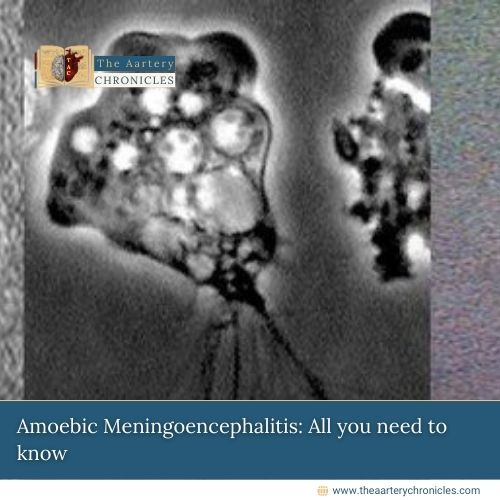

Hepatitis: All that You Need to Know
Introduction
Hepatitis is an inflammatory condition of the liver, that has a profound impact on global health. Derived from the Greek words “hepar” (liver) and “itis” (inflammation), hepatitis has been a recognised condition for centuries, but it wasn’t until the 20th century that specific viral causes were identified.
On World Hepatitis Day, let us delve into the types of hepatitis, their transmission modes, symptoms, treatment, complications, and the global disease burden, alongside a notable case to illustrate its impact.
Origin Story of Hepatitis
The history of hepatitis is intertwined with the history of medicine itself. Ancient civilizations such as the Greeks and Egyptians documented symptoms consistent with liver disease. However, the modern understanding of hepatitis began to take shape in the 20th century. In the 1940s, epidemiological studies started distinguishing between infectious (now known as Hepatitis A) and serum hepatitis (now known as Hepatitis B). The identification of the hepatitis B virus (HBV) in 1966 and the subsequent discovery of hepatitis A (HAV) and hepatitis C (HCV) viruses marked significant milestones. Later, hepatitis D (HDV) and hepatitis E (HEV) were identified, completing the current understanding of viral hepatitis.
Types of Hepatitis
There are five primary types of viral hepatitis, each caused by a distinct virus and presenting unique challenges:
- Hepatitis A (HAV): This virus is typically transmitted through ingesting contaminated food or water. It is often associated with poor sanitation and overcrowded living conditions.
- Hepatitis B (HBV): HBV is spread through exposure to infectious body fluids, such as blood, semen, and vaginal fluids. Common modes of transmission include sexual contact, sharing needles, and from mother to child during childbirth.
- Hepatitis C (HCV): HCV is primarily spread through blood-to-blood contact. This often occurs through sharing needles or other equipment to inject drugs.
- Hepatitis D (HDV): HDV can only infect individuals already infected with HBV, as it requires the HBV virus to replicate. It is transmitted through routes similar to HBV.
- Hepatitis E (HEV): Like HAV, HEV is usually spread through faecal-oral, often through contaminated drinking water. It is particularly prevalent in areas with poor sanitation.
Mode of Transmission of Hepatitis
- HAV: The hepatitis A virus is spread through the fecal-oral route. This can occur when an uninfected person consumes food or water contaminated with an infected person’s faeces.
- HBV: Hepatitis B is transmitted through contact with infectious body fluids. This includes
- Sexual contact
- Sharing needles
- Perinatal transmission (from mother to child at birth).
- It can also be transmitted through accidental needle sticks or other sharp instrument injuries.
- HCV: Hepatitis C is primarily transmitted through blood-to-blood contact. This includes sharing needles or other drug-injection equipment. Less commonly, it can be transmitted through sexual contact, from mother to child during childbirth, or through contaminated blood products.
- HDV: The Hepatitis D virus requires hepatitis B for its replication, so it is only found in individuals infected with HBV. It is transmitted through similar routes as HBV, including blood and body fluids.
- HEV: Hepatitis E is primarily transmitted through the fecal-oral route, usually through contaminated drinking water. It is often associated with outbreaks in areas with poor sanitation.
Symptoms of Hepatitis
Hepatitis can manifest with a variety of symptoms, which can range from mild to severe. These symptoms often appear several weeks after exposure to the virus and can include:
- Fever: A mild fever is common, particularly in the early stages of the infection.
- Fatigue: Many individuals with hepatitis experience extreme tiredness and lack of energy.
- Loss of Appetite: A decreased desire to eat is a common symptom.
- Nausea and Vomiting: These gastrointestinal symptoms are common in hepatitis.
- Abdominal Pain: Pain or discomfort in the upper right quadrant of the abdomen, where the liver is located.
- Dark Urine: Urine may become dark in colour due to the liver’s impaired ability to process bilirubin.
- Clay-Coloured Stools: Stool colour can change to a pale or clay colour, also due to issues with bilirubin.
- Joint Pain: Some individuals experience joint pain, which can be a sign of a more systemic infection.
- Jaundice: A yellowing of the skin and eyes occurs as a result of bilirubin buildup in the blood.
Treatment of Hepatitis
The treatment of hepatitis depends on the type and severity of the infection:
- Hepatitis A and E: Both HAV and HEV are usually self-limiting and do not require specific antiviral treatment.
- The focus is on supportive care to manage symptoms, such as maintaining hydration and rest.
- Hepatitis B: Chronic HBV infection may be treated with antiviral medications, such as entecavir and tenofovir.
- These medications can help reduce the risk of liver damage and prevent the progression of liver cirrhosis or liver cancer.
- Vaccination is available to prevent HBV infection.
- Hepatitis C: HCV can be cured in most cases with direct-acting antiviral (DAA) medications.
- These treatments are highly effective, with cure rates exceeding 95% in many cases.
- Treatment usually involves a combination of DAAs taken for 8-12 weeks.
- Hepatitis D: There is no specific antiviral treatment for HDV.
- Managing HBV can help control HDV, and research is ongoing to develop effective therapies for HDV.
- Prevention of HBV through vaccination also prevents HDV.
- Hepatitis E: HEV typically resolves on its own without treatment.
- Supportive care is provided to manage symptoms.
- In rare cases, antiviral therapy may be required, particularly in pregnant women or individuals with weakened immune systems.
Complications of Hepatitis
Untreated or chronic hepatitis can lead to severe complications, including:
- Liver Cirrhosis: Chronic inflammation and damage to the liver can result in the development of scar tissue, leading to cirrhosis. This condition impairs liver function and can lead to liver failure.
- Liver Cancer: Hepatitis B and C infections significantly increase the risk of developing liver cancer (hepatocellular carcinoma). Chronic inflammation and liver damage create an environment conducive to cancer development.
- Liver Failure: Severe or untreated hepatitis can progress to liver failure, a life-threatening condition where the liver can no longer perform its vital functions.
- Increased Risk of Death: The severe complications associated with chronic hepatitis can lead to an increased risk of death. Timely diagnosis and treatment are critical to preventing these outcomes.
Demographics and Disease Burden
Hepatitis affects millions of people worldwide and imposes a significant health burden:
- Hepatitis B: According to the World Health Organization (WHO), an estimated 296 million people were living with chronic HBV infection in 2019. The disease is particularly prevalent in sub-Saharan Africa and East Asia, where many people become infected during childhood.
- Hepatitis C: Approximately 58 million people were living with chronic HCV infection in 2019, according to the WHO. The highest burden is found in Eastern Mediterranean and European regions, where unsafe medical practices and injection drug use are common transmission routes.
- Hepatitis A and E: These types are more common in areas with poor sanitation and limited access to clean water. They often cause outbreaks in developing countries.
- Hepatitis D: HDV infection occurs in about 5% of individuals with chronic HBV infection. It is most common in parts of the Mediterranean, Middle East, and Central Asia.

Notable Case of Hepatitis C
A notable case of hepatitis is that of Naomi Judd, the famous American singer and actress. Naomi was diagnosed with chronic hepatitis C in the early 1990s. At that time, hepatitis C was less understood and more challenging to treat.
Her diagnosis brought significant attention to the disease, raising public awareness about hepatitis C and the importance of early detection and treatment. Naomi Judd’s advocacy efforts have helped reduce the stigma associated with hepatitis and promote better healthcare outcomes for those affected.
Conclusion
Hepatitis remains a major global health challenge, affecting millions of people and leading to significant morbidity and mortality. Advances in understanding the different types of hepatitis, their transmission, and treatment options have improved outcomes for many patients. Public health efforts to improve sanitation, increase vaccination coverage, and enhance access to antiviral therapies are crucial in reducing the burden of hepatitis worldwide.
References
- Dr. Darshit Patel
- Medicine and Diseases
- 28 July 2024
- 15:00








